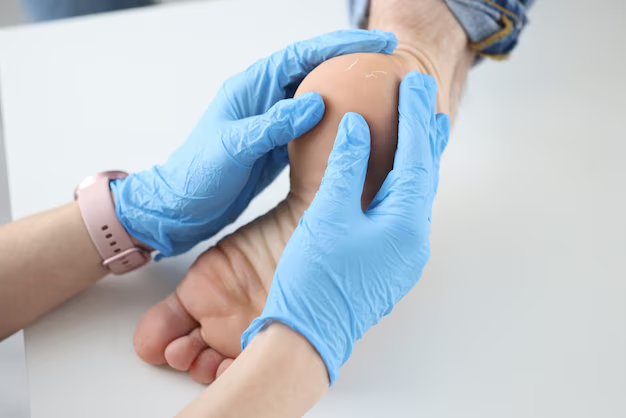Understanding Why People with Diabetes Face the Risk of Limb Loss
Dealing with diabetes is challenging enough, and the notion that it might lead to losing a limb can be daunting. Understanding why this happens is crucial in mitigating the risk and ensuring long-term health.
The Connection Between Diabetes and Limb Loss
The risk of limb loss in people with diabetes predominantly results from two critical factors: peripheral artery disease (PAD) and neuropathy. These conditions are interlinked, making limb management a significant concern for diabetics.
Peripheral Artery Disease (PAD): Diabetes can cause blood vessels to narrow due to fatty deposits, effectively restricting blood flow, especially to the extremities. This reduced circulation means injuries or infections in the extremities heal slowly, if at all.
Neuropathy: This condition involves nerve damage and is a frequent complication in diabetes. Neuropathy can numb the usual pain response to injuries, causing wounds to go unnoticed and untreated. The combination of decreased sensation and poor blood flow can escalate simple injuries to serious infections, increasing the risk of ulcers and gangrene, which may lead to amputations if left unaddressed.
Preventative Measures and Management
Understanding these risks emphasizes the importance of preventive care and vigilant management. Here are actionable steps that can be taken:
- Regular Check-ups: Routine visits to healthcare providers allow for early detection and treatment of circulatory or nerve issues.
- Foot Care Routine: Daily inspections of feet to check for sores, cuts, or any abnormality can significantly lower the risk.
- Blood Sugar Control: Keeping blood glucose levels within target ranges reduces the likelihood of complications.
- Healthy Lifestyle: Regular exercise and a balanced diet promote circulation and overall health.
Exploring Financial Assistance for Diabetics
Navigating diabetes management can come with financial burdens. However, there are financial assistance programs and resources that can offer support:
- Government Aid Programs: Various programs like Medicaid and Medicare provide essential coverage for diabetic supplies and treatment options.
- Non-Profit Assistance: Organizations such as the American Diabetes Association may offer grants or discounted supplies.
- Debt Relief Options: Engaging with financial advisors or health care credit solutions can help find ways to manage medical debt.
- Educational Grants: Some institutions provide scholarships or grants for diabetics or those impacted by diabetes to further education and job opportunities for a stable financial future.
By understanding the risks and taking proactive measures, individuals with diabetes can significantly reduce the likelihood of limb loss, ensuring they lead healthier, more straightforward lives. Additionally, leveraging available financial and educational resources can empower diabetics to manage their health effectively without undue financial stress.
Financial and Educational Resources for Diabetics:
- 💲 Medicaid & Medicare: Coverage for diabetic supplies and medical care.
- 🏥 American Diabetes Association: Possible grants and discount programs.
- 🛠️ Non-Profit Organizations: Various offering support and resources.
- 📈 Credit Counseling: Assistance in managing diabetes-related financial burdens.
- 🎓 Scholarships & Grants: Educational opportunities for those affected by diabetes.
- 📞 Financial Advisors: Professional advice on managing medical expenses.
